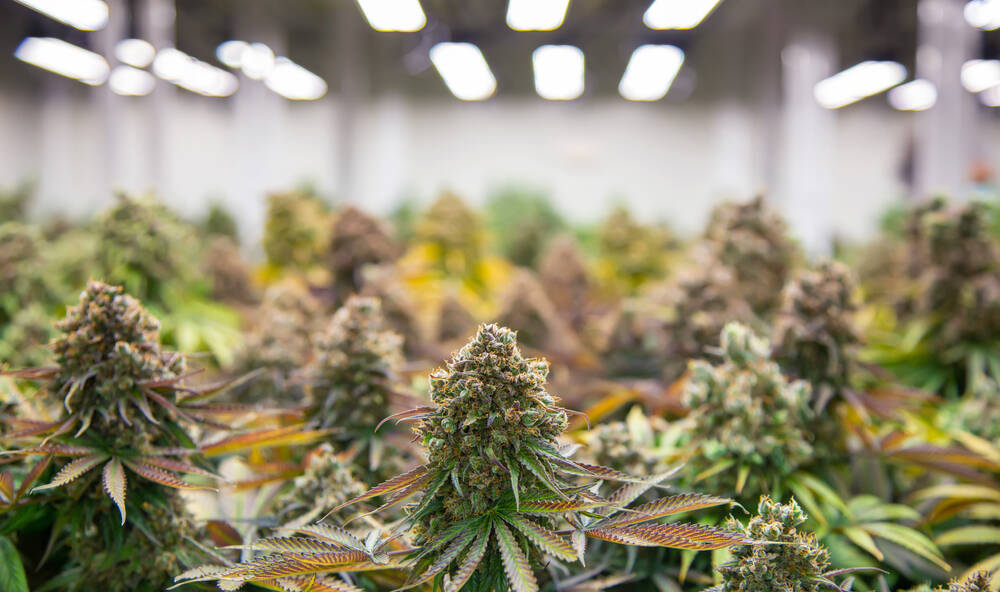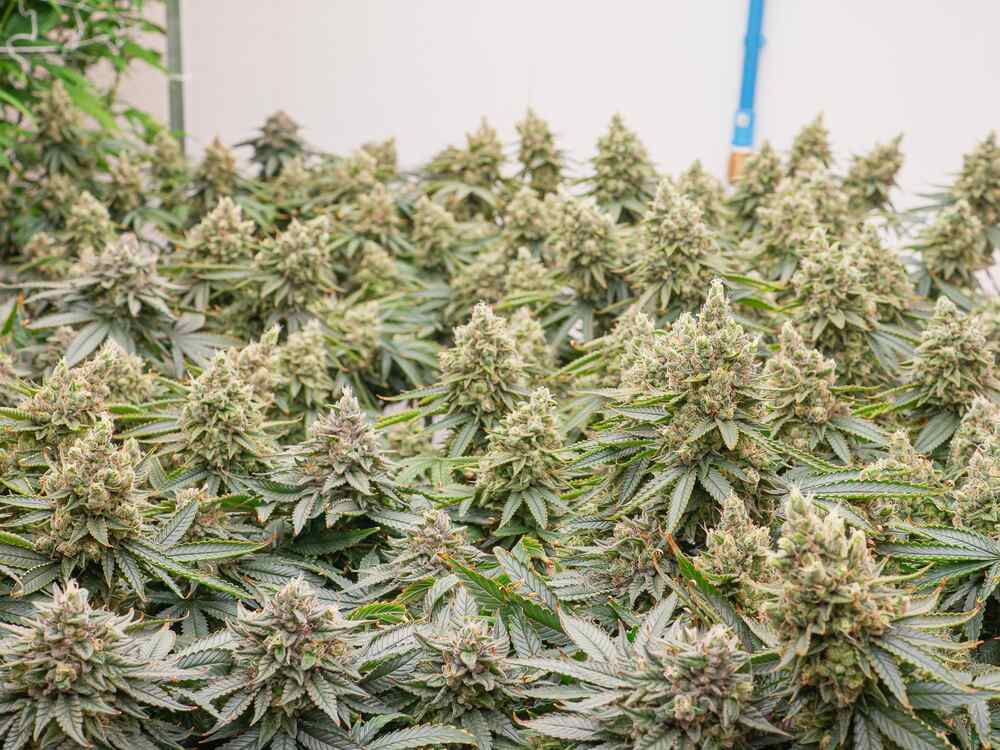The Best Fluffy Pancakes recipe you will fall in love with. Full of tips and tricks to help you make the best pancakes.

How to Grow Dense Buds
Growing dense buds is every grower’s dream. You want those big, chunky nugs that feel weighty in your hand and pack a punch when smoked. But getting there isn’t just about throwing a cannabis seed in some soil and hoping for the best. It takes the right genetics, optimal conditions, and a little bit of technique. Let me walk you through how I grow dense buds so you can get there, too.
Understanding the Factors Behind Dense Buds
It all starts with understanding what makes buds dense in the first place. There’s a mix of factors involved, from the strain you choose to how much light your plants get.
Genetics and strain selection
You can’t get dense buds if your strain isn’t capable of producing them. Strains like Indica tend to grow denser buds naturally, while Sativa buds are often lighter and airier. If density is your goal, start by choosing the right strain. I personally go for hybrids or Indicas that are known for their thick, chunky buds. Strains like White Widow or Granddaddy Purple are good choices.
Environmental conditions (temperature, humidity)
Temperature and humidity also play a huge role. You’re aiming for around 70-85°F (21-29°C) during the day and a slight drop at night. Keep humidity between 40-60% in the vegetative stage, dropping it to 40-50% during flowering. This helps the buds to form tighter and prevents mold from creeping in, especially if you’re growing your weed outdoors.
Light intensity and spectrum
The more light your plants get, the denser your buds will be, period. You want to make sure your plants get full-spectrum light that mimics the sun. I use LEDs because they’re energy-efficient and give my plants everything they need, but HID lights are also solid options.

Providing Optimal Lighting for Dense Bud Development
Your lighting setup can make or break your grow. Too little light, and your buds will be loose and airy. Too much light, and you risk burning them. The sweet spot? Enough light to maximize photosynthesis without stressing your plants out.
Types of grow lights (LED, HID, CFL)
For me, LEDs are where it’s at. They’re efficient, last a long time, and produce less heat, which means I don’t have to worry about my plants getting cooked. HID lights are another great option, especially if you’re on a budget, but they do produce more heat, so you’ll need to keep an eye on your garden’s temps. CFLs are okay for small grows, but they won’t give you the same density that LEDs or HIDs will.
Light cycles during vegetative and flowering stages
During the vegetative stage, you’ll want to keep your plants under light for about 18 hours a day. When you switch to flowering, drop it down to 12 hours. This change triggers the plants to start focusing on bud production. Make sure your lights are close enough to your plants but not so close that they burn—about 12-24 inches is a good range.
Adjusting light distance for optimal bud density
Keeping your lights at the right distance is key. Too far away, and your plants will stretch out, leading to thin buds. Too close, and you could burn them. I usually adjust the distance as the plants grow, starting around 18 inches away and moving it closer during flowering.
Controlling Nutrients for Maximum Bud Density
Your plants are like little nutrient-sucking machines during the flowering stage. They need the right balance of macronutrients and micronutrients to really bulk up those buds.
Macronutrients (NPK ratio) during growth stages
During the flowering stage, you’ll want to shift the NPK ratio so there’s less nitrogen and more phosphorus and potassium. Think of nitrogen as the leafy green nutrient—too much of it, and your plants will focus on growing leaves instead of buds. I like to use a bloom booster with an NPK ratio like 1-4-5.
Micronutrients for healthy bud formation
Micronutrients like calcium, magnesium, and sulfur are the unsung heroes when it comes to growing dense buds. They help your plants absorb the macronutrients better and contribute to overall plant health. I usually add a bit of cal-mag supplement during flowering to keep my plants happy.
Organic vs synthetic fertilizers
There’s a big debate between organic and synthetic fertilizers, but honestly, I think both have their place. Organic fertilizers, like compost or bat guano, give you slower, more sustained nutrient release. Synthetic fertilizers work faster and can give you more control over exact nutrient levels. I’ve used both with success, so it’s really down to what works best for your setup.
Managing Environmental Conditions for Dense Buds
You can’t just set your grow tent and forget it—managing your environment is half the battle when it comes to dense buds.
Temperature control for growth phases
In the vegetative phase, you can let the temps get a bit higher—around 75-85°F. But when you hit flowering, keep it closer to 70-80°F. I also like to drop the temperature a bit more during the last couple of weeks to mimic the natural fall season. This helps tighten up those bigger buds.
Humidity levels and their impact on bud formation
Humidity is something you need to monitor closely, especially in the flowering phase. Too much humidity and you risk mold and mildew, which can ruin all your hard work. I like to keep mine around 50% in flowering and drop it even lower in the last couple of weeks to really tighten those buds up.
Air circulation and CO2 levels
Good air circulation is critical. I keep fans running in my grow space to make sure there’s no stagnant air. Plants love CO2, so if you want to go the extra mile, you can add a CO2 supplement to boost growth.
Training Techniques to Enhance Bud Density
Training your plants can drastically improve your yields and bud density.
Low-stress training (LST) methods
LST involves gently bending and tying down your plants to create an even canopy. This allows more light to reach lower branches, resulting in denser buds all around.
Topping and pruning for denser growth
Topping is where you cut off the top of the plant to encourage more side growth. Pruning involves trimming away smaller, lower branches that aren’t getting enough light so the plant can focus on growing bigger buds at the top.
Defoliation to improve light penetration
Defoliation is just a fancy word for trimming some of the fan leaves. By doing this, you let more light penetrate through the canopy to the buds below. Just be careful not to overdo it—I usually defoliate a bit during veg and a bit more in early flowering.
Watering and Feeding Strategies for Dense Buds
Getting your watering right can make a huge difference in bud density.
Proper watering techniques
You want to water deeply but not too often. Overwatering can lead to root rot and other issues, while underwatering can stress your plants and stunt bud growth. I let the top inch of soil dry out before watering again.
Adjusting pH levels for optimal nutrient uptake
The pH of your water matters. I always aim for a pH of 6.0-7.0 for soil grows and slightly lower for hydro. If the pH is off, your plants won’t be able to absorb all the nutrients you’re giving them, leading to smaller buds.
Flushing before harvest for better bud quality
Two weeks before harvest, I flush my plants with plain water. This helps remove any nutrient build-up, leading to smoother and tastier buds.
Harvest Timing and Post-Harvest Techniques for Dense Buds
Even if you’ve grown the densest buds, harvesting at the wrong time can mess things up.
Recognizing when buds are ready for harvest
I look at the trichomes under a magnifying glass to know when it’s time. You want to harvest when most of the trichomes are cloudy with some turning amber.
Trimming and drying techniques for bud preservation
After harvest, I trim off the fan leaves and hang the buds to dry in a dark room with good airflow. This helps preserve the density and flavor.
Curing methods to enhance density and potency
Once the buds are dry, I cure them in glass jars for at least two weeks. This process improves the potency and brings out the full flavor while maintaining that dense, sticky feel.
FAQ:
How do I make my buds grow denser?
Choose the right strain, provide strong lighting, control nutrients, and manage humidity. Use training techniques to increase bud size.
What nutrients are best for dense buds?
Use a balanced bloom nutrient with a high phosphorus and potassium ratio, plus cal-mag for extra support.
Does more light equal denser buds?
Yes, more light leads to better photosynthesis and denser bud growth, but avoid light burn by maintaining proper light distance.
How does genetics affect bud density?
Strains with indica or hybrid genetics tend to produce denser buds compared to sativa strains.
What temperature should I maintain for dense buds?
Keep the temperature between 70-80°F during flowering for optimal bud density.
Now that you know the ins and outs of growing dense buds, you’ve got all the tools you need to grow the kind of weed that will impress your friends and hit just right. Happy growing!




